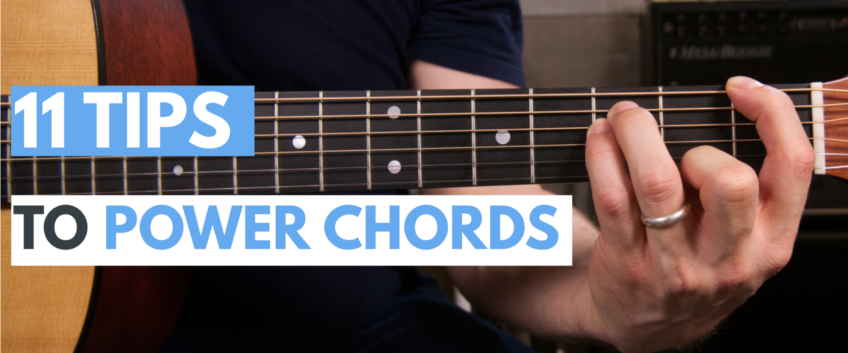
11 Power Secrets to Power Chords – Guitar Tricks
- Origins of the power chord
- The difference between chords and power chords
- Power chords are neither major nor minor
- They’re mobile
- They’re named for their root
- How to strum a power chord?
- Give it a go!
- Add an octave
- Root on another string
- Practice moving between strings
- Don’t get caught in the power chord trap
- About The Author
One of the coolest things you can play on a guitar is power chords. They’re also one of the easiest as they require the least finger strength of any guitar chords. These two-note treasures (which aren’t really chords per se as much as they are bottoms of chords) are so simple in fact that they’re sometimes referred to as “cheater” chords.
Power chords are used in all genres of music and are a key element in rock. When played on an electric guitar with the distortion cranked up, they add depth and tonal color. Their heavy, ominous sound helps set the mood of a song.
If you are new to power chords, check out this complete guide to help you get started with them.
You will find a free downloadable pdf with all the positions and the fingering.
We have also added several tabs to start practicing but above all to have fun!
The following is a glimpse into the world of power chords and tips for playing them:
Origins of the power chord
Power chords were first used back in the 1950s on recordings by electric blues guitarists Willie Johnson and Pat Hare. Link Wray used them in 1958 on “Rumble.” But it’s The Who’s Pete Townshend, with his famous windmill strum, who often gets credit as the first to take power chords mainstream.
The difference between chords and power chords
A chord is the combination of three or more notes played simultaneously. Known as triads, chords contain a root, third and fifth note, at least. Power chords, on the other hand, are dyads. They are composed of a root and fifth note only, though they can also include an additional octave note.
Power chords are neither major nor minor
Since a power chord doesn’t contain a third note, which determines whether a chord is major or minor, it is neither. Power chords are tonally ambiguous. They can be used in a situation where either a major or a minor chord is called for.
They’re mobile
Unlike chords with their shifting configurations, a power chord is a fixed shape that moves up and down the guitar neck to create other, different power chords. All that changes is the name and location of the chord on the fretboard, not its shape.
They’re named for their root
Power chords are often called a “fifth” or “5” chord. If you see a chord written as G5, it’s a G power chord. The root of the G5 chord is played on the sixth string, third fret—a “G.” If you move the chord up two frets to the fifth fret, sixth string, it’s an “A” power chord or an A5 since the root note on the fifth fret of the sixth string is “A.” You get the picture. By the way, if you’re a bit rusty on note names, now would be a good time to brush up.
How to strum a power chord?
To strum a power chord, play only the two or three strings you’re fretting. As a power chord contains no open strings, you’ll have to mute any unused strings. To do this, use the tip of your first finger to fret the root note and, with the rest of the first finger resting lightly on the remaining strings in that fret, mute all open strings. Power chords are typically strummed fast and rhythmically. Start with downstrokes and then add in upstrokes.
To spice up your practice, download the tablatures of the intros of “Smells Like Teen Spirit” and “Eye of the Tiger” here. You’ll find the scores at the bottom of the article.
Give it a go!
Begin with the G power chord or G5. To form the basic power chord shape, place your first finger on the sixth (low E) string, third fret. This is a “G” note and the chord’s namesake. Next, place your third finger on the fifth (low A) string, fifth fret. Strum these two notes together, making sure both ring cleanly. Now, keep that same shape and try moving it up and down the neck of your guitar. Remember to mute any open strings.
Add an octave
You can add a third note to the dyad to get a fuller sound. Sticking with the G5, place your fourth finger on the fourth (low D) string, fifth fret, right under your third finger. (You can also barre the two fifth fret notes with your third finger.) This will be a second “G” note, an octave of the sixth string “G” root.
Root on another string
You can build a power chord using the fifth string as your root by simply moving the entire power chord shape down one string. This will necessitate a muted sixth string. To do this, press down on the fifth string root note with the upper pad of your first finger and use the tip of the finger to mute the sixth string above. Lay the rest of the first finger lightly over the open strings below to mute them.
Practice moving between strings
Try rooting a power chord on the sixth string, and then move that chord down, rooting it on the fifth string. Alternate back and forth from the sixth string to the fifth, up and down the fretboard, keeping the fingers in contact with the strings the whole time. Since the chord shape stays the same, there’s no need to lift the fingers.
Don’t get caught in the power chord trap
Just because you can play a C power chord doesn’t mean you can play a C chord. They are two different chords entirely. Mastering power chords doesn’t mean you don’t need to learn to play real chords – you do.
About The Author
Founded in 1998, Guitar Tricks is the Web’s first multimedia guitar lesson site. 16 years later, Guitartricks.com features over 40 guitar instructors continuously creating a massive library of online video guitar lessons (8000+) covering every musical style, technique, and level of ability.
Leave a comment
Your email address will not be published.
| Title | Artist | |
|---|---|---|
Hotel California

|
The Eagles | |
| Save Your Tears | The Weeknd | |
| Rollin' and Tumblin' | Muddy Waters | |
| The Air That I Breathe | The Hollies | |
My Girl

|
The Temptations |

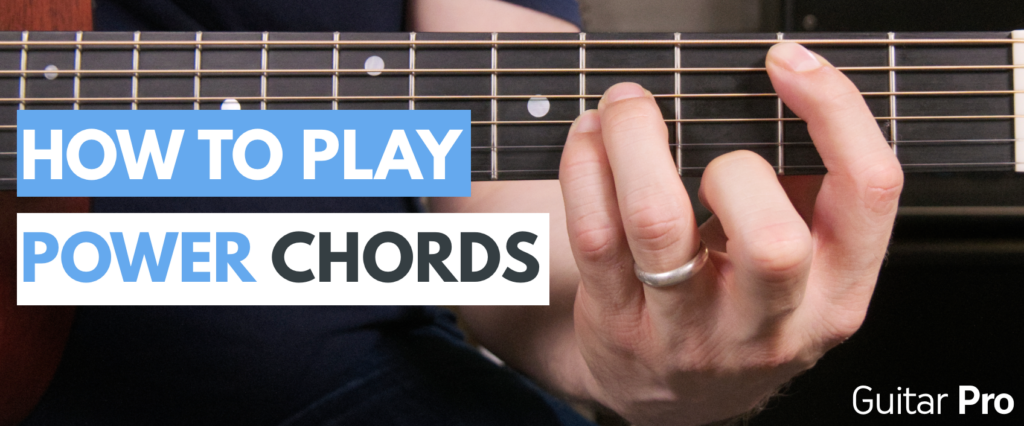

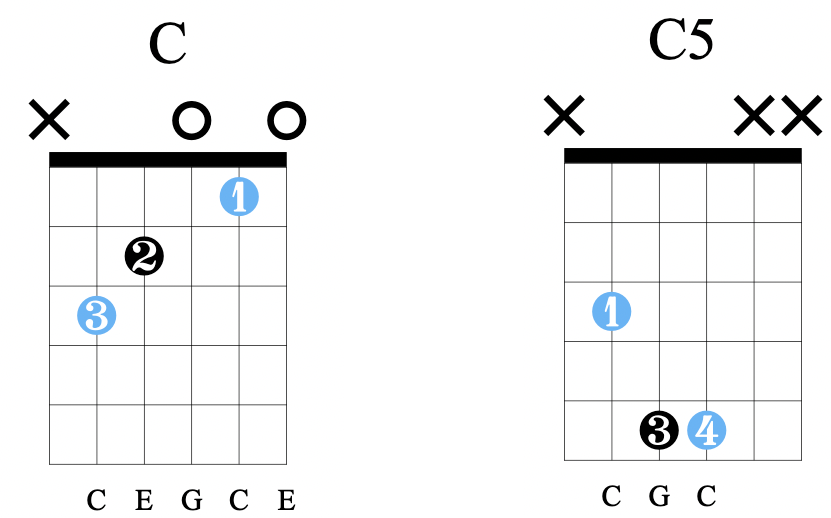
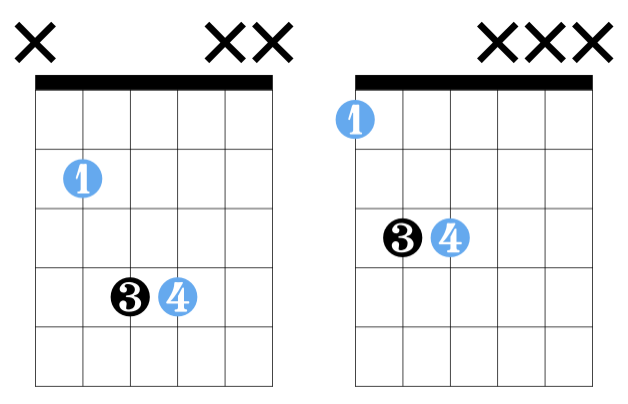
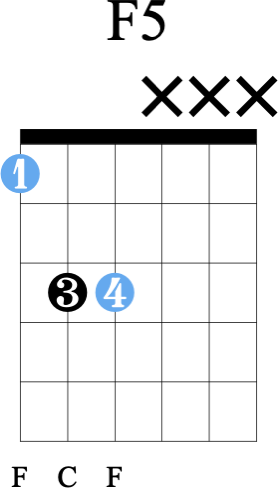

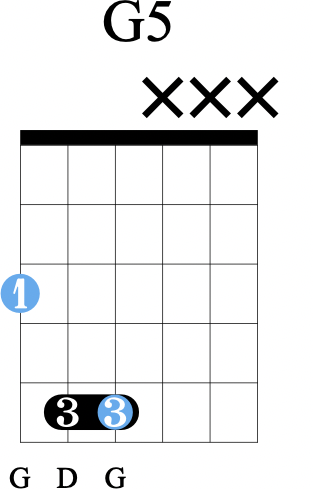


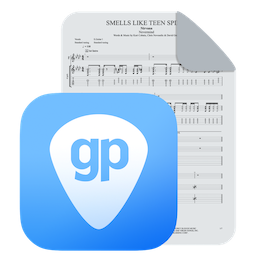
8 Comments
The article gives good information on guitar chords. I have learned guitar chord notes and how to use them. I want to know the guitar upgradation process and for this, it is required to get sound knowledge of guitar anatomy.
How do you mute the other open strings? I’m having hard time muting them using my middle finger. Other suggest to mute them with your palm in your strumming hand. Which way is correct?
Hi, I’m having problems when I play large lines with power chords, for instance the verse of Aces High by Iron Maiden, that the chords don’t smoothly ring one after another. They rather sound like I’m playing each chord seperately with somewhat of a pause between them.. sort of staccato. How can I solve this? Is this a two hand synchronization problem?
Hello, please contact our support for help: https://support.guitar-pro.com/hc/en-us/requests/new
Thank you.
Brad, try to touch the tip of your index finger onto the 6th string, just enough to mute it in that situation.. you wont have to worry about strumming it while it’s muted then
Hey,
When playing a power chord with the root on the fifth string, how do you properly pick that so that the 6th string doesn’t ring out. Because whenever I play those chords I have to focus on not hitting the top string. Any Tips??
hello there. I have a question about power chords. well, I am a 5 month guitar player and I play power chords with my index finger on the 6th string, and then my ring finger pressing down on the 5th and 4th string at the same time. I picked up this habit from Kurt Cobain and I find it to be quite comfortable, but other guitarists I have met tell me that doing that technique with my ring finger is eventually going to cause arthritis in my ring finger. I was just wondering if this is an improper use of playing power chords or if this arthritis “myth” is true? I have tried learning playing power chords with my pinky involved but it’s just so excruciatingly uncomfortable and the way I play a power chord now is just so comfortable to me. I guess what I’m asking is; is my style of power chords improper and if so, should I change how they’re played.
Thanks!
Hi Chris,
I would say that it’s probably better for you to start playing power chords with your pinky finger involved as it will be useful for you for any chord in the future (major/minor triads for instance). On the other hand, if you feel confortable playing power chords this way just do it. Many famous guitarists play their power chords with their ring finger 😉